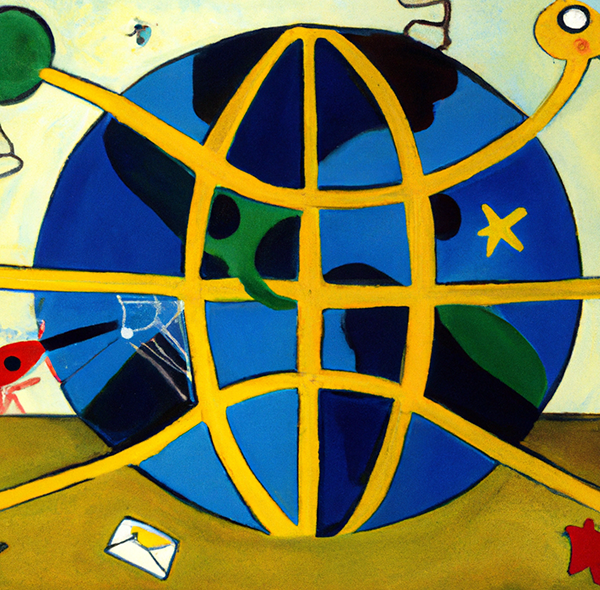
All the World’s a Page
If you’re in Washington, DC, this summer—and summer is the best time to be in Washington, especially if you love humidity—be sure to visit the Folger Library and a special new exhibit. No, not coffee, but rather the library’s collection of 82 copies of the First Folio (there are 235 surviving copies worldwide). The First Folio is of course the first collection of Shakespeare’s plays, compiled by actors John Heminges and Henry Condell, and published in 1623, seven years after the bard’s death. If not for the First Folio, the greatest plays ever written might well have been lost forever.
The First Folios were collected, somewhat obsessively, by the oil tycoon Henry Clay Folger and his wife, Emily Jordan Folger, between 1893 and 1928. Their library opened in 1932 in a marble building close to the US Capitol, Library of Congress and supreme court. It was a useful resource for members of Congress seeking to sprinkle Shakespearean quotations into political speeches.
Rather than put on display, they were stashed in a vault, unseen by anyone except the occasional special guest.
The secrecy is about to change thanks to a major three-year renovation that has added two exhibition halls including the First Folio Gallery, where the 82 copies will be shown together for the first time.
Even better:
The gallery will also boast a printing press modeled on those that printed the First Folio 400 years ago. Witmore noted that “we realised that people who are used to just accessing text on their devices have no idea how hard it was to create a book.
The exhibit will open in June.
Bewitching Hour
We love typography but sometimes type designers can overthink things. Via Print magazine, Federico Parra Barrios has designed a new, high-concept typeface based on meteorology. Called Hour, it “interprets the forms of engraved letters against the sun’s movement and changing ambient light.” Say what?
Variability sets Hour apart despite the typeface having only two axes. The first, “hour,” acts as a sundial, determining the angle of light; the second, “okta,” pulls from the meteorological concept of cloud cover, playing with the intensity of light, from opaque cloud cover to a sunny, clear day.

This movement of light around the forms gives Hour an infinite quality and makes it uniquely suited for motion design. Hour can also be used for eye-catching display.
Could you use it to indicate what your print deadline is?
Cat Boxing
If you have ever had a cat and a cardboard box, you know that within moments the former will be firmly ensconced in the latter (and, on occasion, the reverse will be the case). Why do cats have such an affinity for cardboard boxes? Well, via Laughing Squid, Mallory Crusta of Cats.com explains it for us:
While scientists still aren’t sure, it appears that boxes allow cats to remain hidden in plain sight, letting them act as the predators they naturally are. And similar to tape squares, a box seem to give a cat a sense of order in a chaotic world. Additionally, the smell and the texture of a box provides cats with warmth, safety, and a general sense of well-being.
So all those print businesses getting into corrugated and folding carton production may be well-advised to go after the all-important cat market. We’ll have to add this to our Outlook survey next fall.
AI-Yi-Yi, Part the Infinity: Rabbit Run
Have you heard of the Rabbit R1? No, nor had we, but Core77 says that the technology blogosphere is positively abuzz with praise for it. What is it?
a new AI-powered gizmo we're all supposed to carry around in our pockets. Tellingly, the articles written gush about numbers—$199 price, 2.3GHz processor, 128GB of storage—but there's a dearth of info on what this thing is actually supposed to do. What the hell is this thing, why would anyone need it?

The issue, apparently, is that we have too many apps on our smartphones. If you want to call an Uber, you have to tap one app. If you want to order food, you have to tap another one. Of course, it’s highly unlikely you would be doing both of these things simultaneously. But, fine, we grant the premise. How does Rabbit R1 solve the very real problem of pushing a button? Via AI, of course!
So what the R1 does, as far as I can tell, is take verbal instructions from you, and then it deals with the apps (which you still need to be signed into, through the company's web portal) unseen, acting as your proxy. Visual feedback, provided for confirmation's sake, is provided on a small 2.88" screen. It also takes a SIM card, but it’s not clear what the plan is here—are you meant to sign up and pay for a second phone number? And what is the camera for, or more specifically, where do the photos go once you take them, and how do you access them?
All good questions. Because who doesn’t want to have to carry around another device? This explanatory video raises more questions than it answers.
Snowmen Unbressed
The BBC recently ran a holiday edition of David Mitchell’s long-running radio quiz show The Unbelievable Truth, the panel show in which comedians try to sneak unlikely truths past other panelists who then must identify only slightly less plausible lies. One of the unlikely truths was that a wealthy—and apparently very prudish—Frenchwoman stipulated in her will that her money go to providing clothes for snowmen. Naturally, we had to immediately look that up.
The woman in question was Madame de la Bresse who passed away in 1876. She also got a mention in Bill Bryson’s 1990 book The Mother Tongue: English & How it got that Way (via Weird Universe):
[The nineteenth century] was an age when sensibilities grew so delicate that one lady was reported to have dressed her goldfish in miniature suits for the sake of propriety and a certain Madame de la Bresse left her fortune to provide clothing for the snowmen of Paris.
Dogs must have completely freaked them out. Anyway, it may not have been the snowmen that were the concern. Bob Eckstein writes in The History of the Snowman:
The date was December 8, 1870. Snow began to cover Paris. Bored officers threw snowballs, and some of the soldier-artists began to make snow sculptures. Before long, the snowballs became monumental snow statues. One soldier, Alexandre Falguière, channeled his angst of his home city being attacked by creating La Résistance, a colossal snow woman, which was constructed in a mere two to three hours with the help of others.
…The snow woman was light in the bosom yet clearly blessed with a female face. She had broad shoulders with folded muscular arms and possessed an able-bodied, World Wrestling Federation savoir faire, which suggests Falguière compared the Prussian siege of Paris with the sexual aggression of a relentless female refusing to succumb (La Résistance).
However, it's entirely possible that Madame de la Bresse and her bequest were invented by Robert Ripley. So believe it…or not.
Hoverbrella
Two words: floating umbrella. Via Core77:
Despite having no background in industrial design nor CAD proficiency, this Canadian YouTubermanaged to design and build a working prototype of a flying umbrella that follows the user.
It's obviously not ready for primetime, but he does seem to have solved some problems that earlier inventors hadn't. It's not inconceivable to think we'll see something like this on Kickstarter within a few years.
Take our money!
Best of Breed
We talked about cats earlier, so the equal time rule requires us to mention dogs.
So, how did the various dog breeds get their names? Via Laughing Squid, Patrick Foote of Name Explain traces the etymologies of dog breed names. Not unsurprisingly, many of the names come from the breed’s geological origin, but some describe their physical attributes.
For example, terrier came from the word “terra” because of the breed’s fondness for burrowing, the bulldog was so named for the breed’s unwilling participation in the old English sport of bull-baiting, the word dachshund means badger dog in German. The word for poodle also comes from German, indicating the breed’s love for water.
Back Brick in Black
Ekow Nimako is a Ghanaian-Canadian artist who uses black Lego (never “Legos”) to build amazing sculptures. They’ve even been exhibited in galleries.
While some of his masterpieces take nearly one-thousand hours to create, he has the ability to prototype a new design in just one day. We tour his home studios where he began creating his breathtaking art and explore some of his custom builds inspired by Black mythology.
Pretty amazing.
Graphene Gets In Your Head
Was it a good week for graphene news? It’s always a good week for graphene news! Graphene-based implantable neurotechnology devices. From (who else?) Graphene-Info:
Preclinical studies by various neuroscience and biomedical experts that partnered with ICN2, using different models for both the central and peripheral nervous system, reportedly demonstrated the capacity of EGNITE in recording high-fidelity neural signals with exceptional clarity and precision and, more importantly, affording highly targeted nerve modulation.
The team expects the unique combination of high-fidelity signal recording and precise nerve stimulation offered by EGNITE technology to represent a potentially critical advancement in neuroelectronic therapeutics. This innovative approach addresses a critical gap in neurotechnology, which has seen little advancement in materials over the last two decades. The development of EGNITE electrodes has the capacity to place graphene at the forefront of neurotechnological materials.
What the Bock?
Sure, anyone can talk turkey. But can you chat chicken? Via Atlas Obscura:
A recent study in Royal Society Open Science shows that humans can intuitively pick up on basic chicken emotions—excitement and discontent—by the sound of their clucks alone.
And whether they’re trying to peck your eyes out, we’d bet.
Nearly 70 percent of people could match the cluck with the correct emotion regardless of their previous experience with chickens, or lack thereof. This research reminds us of humans’ innate connection to other beings, and our ability to pick up on universal signs of happiness and distress, says coauthor Joerg Henning of Australia’s University of Queensland.
Chickens do communicate with each other and, presumably, with other species.
They use body language such as flashing their feathers, but their less expressive faces may lead humans to overlook their complex emotions, says backyard chicken expert Tove Danovich, author of Under the Henfluence.
“Backyard chicken expert.” We’d be curious to know what NAICS that would be.
Anyone listening to Boston radio circa 1980 may remember this.
Putting the Cart Before the Hoarse
Are you tired of celebrity spokesmen for booze? Weary of Ryan Reynolds pitching Aviation Gin, Dwayne Johnson flogging Teremana Tequila, or George Clooney hawking Casamigos? No, nor were we. In fact, we were unaware of any of these before we read this article at Marketing Dive (or Marketing Dive Bar, which would be appropriate). Tito’s Vodka is apparently “disrupting” alcohol marketing by having a silent but ubiquitous “spokescart.” Say what?
Titled “With Tito’s,” the effort centers on a roving bar cart character dubbed the Spokescart. In a series of commercials, the silent but autonomous Spokescart delivers Tito’s cocktails to people in a variety of settings, such as a man sitting contemplatively in a bathtub and a couple sweltering by the pool side.

“With Tito’s” aims to preserve a folksy allure despite Tito’s swelling popularity and name recognition. The campaign responds to a perceived overabundance of splashy, celebrity-owned competitors, instead focusing on a simple though “slightly cheeky” bar cart character that delivers Tito’s to those in need of refreshment without uttering a peep.
Uh huh.
Taking Wing(s)
If WhatTheyThink were to buy a football team, it would be the Buffalo Bills, if only to change their name to the Buffalo Wings. But until then, Bills it is. But Bills fans (or anyone, really) can still take advantage of Popeye’s Super Bowl special. Says Food & Wine:
Popeyes recently announced its “Wings for Wings” promotion, promising to give all of us a free six-piece order of its chicken wings if either a “winged” NFL team — or the Buffalo Bills — ends up winning this year’s Super Bowl.
The Eagles are out, but the Baltimore Ravens are still in it. And why Buffalo? Buffalo wings are said to have originated there, although, like any origin story, competing accounts exist. (And the Ravens were named after the Edgar Allan Poe poem, although Poe himself had a minimal connection to Baltimore, aside from having mysteriously died there.) Anyway:
If either Baltimore or Buffalo (which Popeyes included because of the city’s connection to, well, wings) do end up winning the Super Bowl, wing lovers will be able to collect one free six-piece order of wings on February 13 by making any purchase at a participating Popeyes restaurant or through the Popeyes app.
We’re not sure what kind of food promotion would tie in with the Browns winning the Super Bowl. Brown M&Ms?
This Week in Printing, Publishing, and Media History
January 15
1759: The British Museum opens.
1876: The first newspaper in Afrikaans, Die Afrikaanse Patriot, is published in Paarl.
1892: James Naismith publishes the rules of basketball.
1936: The first building to be completely covered in glass, built for the Owens-Illinois Glass Company, is completed in Toledo, Ohio.
1941: American singer-songwriter, musician, and artist Captain Beefheart (né Don Van Vliet) born.
1962: The Derveni papyrus, Europe's oldest surviving manuscript dating to 340 BC, is found in northern Greece.
1967: The first Super Bowl is played in Los Angeles. The Green Bay Packers defeat the Kansas City Chiefs 35–10.
2001: Wikipedia, a free wiki content encyclopedia, debuts online.
January 16
27 BC: Gaius Julius Caesar Octavianus is granted the title Augustus by the Roman Senate, marking the beginning of the Roman Empire.
1492: The first grammar of the Spanish language (Gramática de la lengua castellana) is presented to Queen Isabella I.
1605: The first edition of El ingenioso hidalgo Don Quijote de la Mancha (Book One of Don Quixote) by Miguel de Cervantes is published in Madrid, Spain.
January 17
1706: Benjamin Franklin born.
1867: German-born American film producer and co-founder of Universal Studios Carl Laemmle born.
1904: Anton Chekhov’s The Cherry Orchard receives its premiere performance at the Moscow Art Theatre.
1929: Popeye the Sailor Man, a cartoon character created by E. C. Segar, first appears in the Thimble Theatre comic strip.
January 18
1873: English author, poet, playwright, and politician, Secretary of State for the Colonies Edward Bulwer-Lytton dies (b. 1803).
1882: English author, poet, and playwright A. A. Milne born.
1936: English author and poet, Nobel Prize laureate Rudyard Kipling dies (b. 1865).
1993: Martin Luther King, Jr. Day is officially observed for the first time in all 50 states.
January 19
1729: English playwright and poet William Congreve dies (b. 1670).
1736: Scottish-English chemist and engineer James Watt born.
1764: The world’s first mail bomb severely injures the Danish Colonel Poulsen, residing at Børglum Abbey.
1809: American short story writer, poet, and critic Edgar Allan Poe born.
1829: Johann Wolfgang von Goethe’s Faust: The First Part of the Tragedy receives its premiere performance.
1853: Giuseppe Verdi’s opera Il trovatore receives its premiere performance in Rome.
1883: The first electric lighting system employing overhead wires, built by Thomas Edison, begins service at Roselle, N.J.
1915: Georges Claude patents the neon discharge tube for use in advertising.
1940: You Nazty Spy!, the very first Hollywood film of any kind to satirize Adolf Hitler and the Nazis, premieres, starring The Three Stooges, with Moe Howard as the character “Moe Hailstone” satirizing Hitler.
1953: Almost 72% of all television sets in the United States are tuned into I Love Lucy to watch Lucy give birth.
1983: The Apple Lisa, the first commercial personal computer from Apple Inc. to have a graphical user interface and a computer mouse, is announced.
1986: The first IBM PC computer virus is released into the wild. A boot sector virus dubbed (c)Brain, it was created by the Farooq Alvi Brothers in Lahore, Pakistan, reportedly to deter unauthorized copying of the software they had written.
2038: The 32-bit Unix time will overflow at 03:14:07 UTC.
January 20
1894: American cartoonist and creator of Little Orphan Annie Harold Gray born.
1920: Italian director and screenwriter Federico Fellini born.
1920: American actor DeForest Kelley born.
1929: In Old Arizona, the first full-length talking motion picture filmed outdoors, is released.
1937: Franklin D. Roosevelt is sworn in for his second term as U.S. President, the first Presidential Inauguration to take place on January 20 following the ratification of the 20th Amendment.
1954: In the United States, the National Negro Network is established with 40 charter member radio stations.
1986: In the United States, Martin Luther King, Jr. Day is celebrated as a federal holiday for the first time.
January 21
1535: Following the Affair of the Placards—an incident in which anti-Catholic posters appeared in public places in Paris and in other major French cities, including one on the bedchamber door of King Francis I—French Protestants are burned at the stake in front of the Cathedral of Notre Dame de Paris. Don’t underestimate the power of display graphics!
1789: The first American novel, The Power of Sympathy or the Triumph of Nature Founded in Truth by William Hill Brown, is printed in Boston.
1924: English actor, singer, and screenwriter Benny Hill born.
1950: British novelist, essayist, and critic George Orwell dies (b. 1903).
1953: Co-founder of Microsoft Paul Allen born.
1971: The current Emley Moor transmitting station, the tallest free-standing structure in the United Kingdom, begins transmitting UHF broadcasts.
2020: Welsh actor, director, and screenwriter Terry Jones dies (b. 1942).










Discussion
Join the discussion Sign In or Become a Member, doing so is simple and free